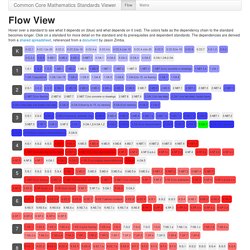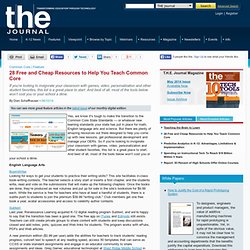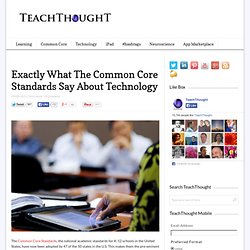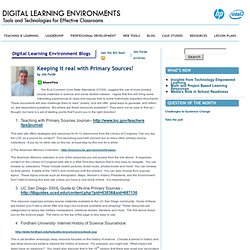

Common Core Mathematics Standards. Hover over a standard to see what it depends on (blue) and what depends on it (red).

The colors fade as the dependency chain to the standard becomes longer. Click on a standard for more detail on the standard and its prerequisites and dependent standards. The dependencies are derived from a shared spreadsheet, referenced from a document by Jason Zimba. 0.CC.1||to 20 0.CC.2||to 10 0.CC.4.a 0.CC.4.b 0.CC.4.c||to 10 0.CC.4.c||to 20 0.CC.5||to 10 1.NBT.4||no concrete or drawings 1.OA.1||equations 1.OA.1||to 15 1.OA.6||to 15, no fluency. 28 Free and Cheap Resources to Help You Teach Common Core. Common Core | Feature 28 Free and Cheap Resources to Help You Teach Common Core If you’re looking to invigorate your classroom with games, video, personalization and other student favorites, this list is a great place to start.

And best of all, most of the tools below won’t cost you or your school a dime. By Dian Schaffhauser06/10/14 Yes, we know it's tough to make the transition to the Common Core State Standards — or whatever new learning standards your state has put in place for math, English language arts and science. English Language Arts BoomWriter Looking for ways to get your students to practice their writing skills? Subtext Last year, Renaissance Learning acquired K-12 digital reading program Subtext, and we’re happy to say that the transition has been a good one. Text Compactor This “free online automatic text summarization tool” was created by Knowledge by Design, which produces products for students with disabilities. Be the teacher they remember. The one who empowers their success! Key Tech Terms in the CCSS.
Exactly What The Common Core Standards Say About Technology. The Common Core Standards, the national academic standards for K-12 schools in the United States, have now been adopted by 47 of the 50 states in the U.S.

This makes them the pre-eminent source of what is being taught in the vast majority of public schools in America. Much has been made in the blogosphere and across social media of the changes compared to former academic standards that were dictated at a state level. Reactions usually involve the added demand these standards place on text complexity and general rigor. Since they’re only available for English-Language Arts and Math, it’s difficult to get a full picture for how they will impact public education, but some inferences can be made based on the set of ELA standards. TeachThought’s focus is on the intersection of education and technology, and the Common Core certainly takes aim at in-depth student technology use. Common Core Standards W= Writing RI= Reading: Informational SL= Speaking and Listening.
Keeping it real with Primary Sources! The ELA Common Core State Standards (CCSS) suggest the use of more primary source materials in science and social studies classes.

I agree that this will bring some interesting experiences to class and expose kids to some historically important documents. These documents will also challenge them to read “closely” and will offer great ways to generate, and reflect on, text dependent questions. But where are these resources available? They were not as easy to find as I thought, but here is a set of starting points that’ll point you in the right direction! Teaching with Primary Sources Journal-- This web site offers strategies and resources for K-12 classrooms from the Library of Congress. 2)The American Memory Collection-- The American Memory collection is one of the resources you will access from the link above.
UC San Diego- SSHL Guide to ON-line Primary Sources - This resource organizes primary source materials available to the UC San Diego community. Primary Source Nexus - Science News - Physical Education/Health Resources. Art and Music Resources. ESL Resources. World Language Resources. Social Studies Resources. Science Resources. ELA Resources. Math Resources.